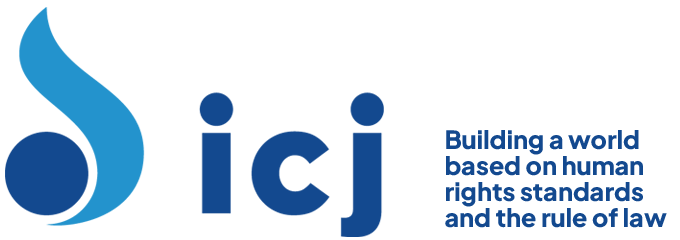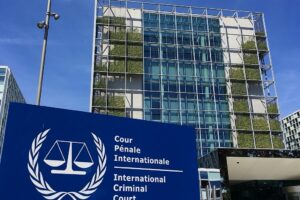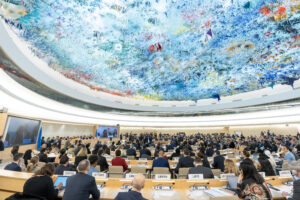IV. Restrictions to children’s right to freedom of expression
39. Judicial systems often play a significant role in altering engrained authoritarian practices. There are as yet few examples of court decisions affirming children’s right to freedom of expression and access to information. However, there is a growing number of examples within educational settings, especially in the United States. For example, a student at a Florida high school was banned from wearing any symbol of support for gay rights at school because the principal believed that any symbol featuring rainbows would make students picture gay people having sex. In a decision quoting the Tinker case mentioned above, a federal judge ruled in May 2008 that the school had violated the students’ rights.{{9}}
43. In addition to banning information outright, some school curricula present biased accounts of history or prejudiced views of certain groups, such as girls, sexual or ethnic minorities or children with disabilities, which can negatively affect children’s freedom to form their own views and instead perpetuate discrimination – a situation raised by various United Nations treaty bodies in their recommendations to States.
44. This issue has also been addressed by the European Committee of Social Rights, which in 2009 found that the Croatian school curriculum covering sex education discriminated on the basis of sexual orientation. The Committee asserted that some statements in the curriculum stigmatized homosexuals and were based upon negative, distorted, reprehensible and degrading stereotypes.{{11}}
V. Child protection used as a justification for disproportionate restrictions on freedom of expression
53. Most disturbingly, child protection arguments are being used to block access to information on, for example, lesbian, gay, bisexual and transgender issues and thereby legitimize discrimination against sexual minorities. In the Russian Federation, amendments to the administrative code and law protecting children from harmful information entered into force in July 2013, outlawing “propaganda of non-traditional sexual relations” among children.{{12}} The Special Rapporteur on the rights to freedom of peaceful assembly and of association publicly expressed concern about that law in a joint statement with other mandate holders. The child protection rationale for the Russian anti-homosexuality law has also been rejected by the European Court of Human Rights in its 2011 case Alekseyev v. Russia. Despite the criticism, other countries have followed suit. In Ukraine, in 2013, it was recommended that a draft law prohibiting “propaganda of homosexual relations” aimed at children be considered by the parliament.{{13}} In the draft law “propaganda” is defined as any public action aimed at spreading information about same –sex relations. In June 2014, the human rights committee of the parliament of Kyrgyzstan approved a bill criminalizing the dissemination of information “aimed at forming positive attitudes towards non-traditional sexual relations”.{{14}}
VI. Promoting children’s freedom of expression
B. Encouraging child-led advocacy
58. In the Republic of Korea, high school students have promoted a major social mobilization against authoritarian practices within the education system. As a result of the public debate generated by the students, in January 2012, the Seoul Metropolitan Council adopted a students’ rights ordinance ensuring, inter alia, the right of students to protest, a ban on corporal punishment, the elimination of mandatory participation in religious activities and the protection of lesbian, gay, bisexual and transgender students and pregnant students against discrimination. Action for Youth Rights of Korea, an association established by Korean students in the context of this mobilization, continues to promote student activism.
VII. Children’s access to the Internet
67. Furthermore, the Internet provides unique avenues for young people to participate in public debates. For example, in the United States a 17-year-old boy reportedly organized a Twitter campaign to protest against a bill that would have banned teachers from discussing homosexuality in schools.{{17}}
68. Social networking sites are also increasingly important to children as a means of fostering relationships and facilitating information exchange and interaction.{{18}} Children report that social networking encourages creativity, enables choices and opinions to be informed by peer preferences, facilitates discussion and provides a platform for self-expression that is unavailable offline.{{19}} These sites may serve an especially important role for members of minority groups, such as the lesbian, gay, bisexual and transgender community, who might otherwise feel isolated.{{18}}
Link to full text of the report: Report-SRFoE-2014-eng
[[9]]9. American Civil Liberties Union, “Federal judge rules that students can’t be barred from expressing support for gay people” (13 May 2008).[[9]]
[[11]]11. International Centre for the Legal Protection of Human Rights v. Croatia. [[11]]
[[12]]12. See Russian Federation Federal Law No. 135-FЗ (29 July 2013).[[12]]
[[13]]13. See draft law No. 1155 on the prohibition of propaganda of homosexual relations aimed at children (June 2011).[[13]]
[[14]]14. See draft law on the protection of children from information harmful to their health or development (2014).[[14]]
[[17]]17. Shira Lazar, “Is it okay to say gay? Devon Hicks protests Tennessee bill”, Huffington Post, 25 May 2011. [[17]]
[[18]]18. UNICEF Innocenti Research Centre, Child Safety Online: Global Challenges and Strategies (May 2012).[[18]]
[[19]]19. Child Exploitation and Online Protection Centre, Understanding Online Social Network Services and Risks to Youth: Stakeholder Perspectives (2006).[[19]]




